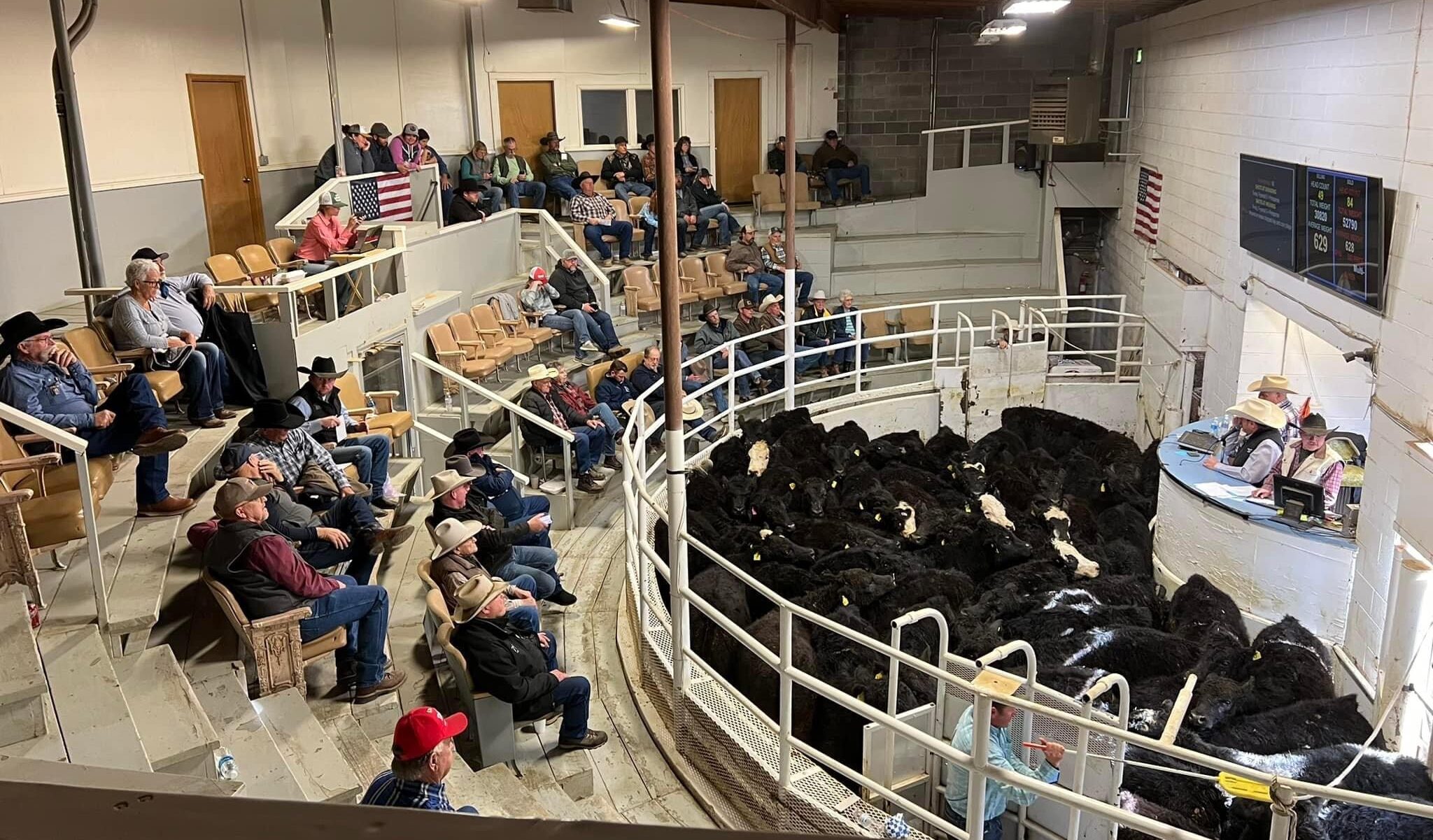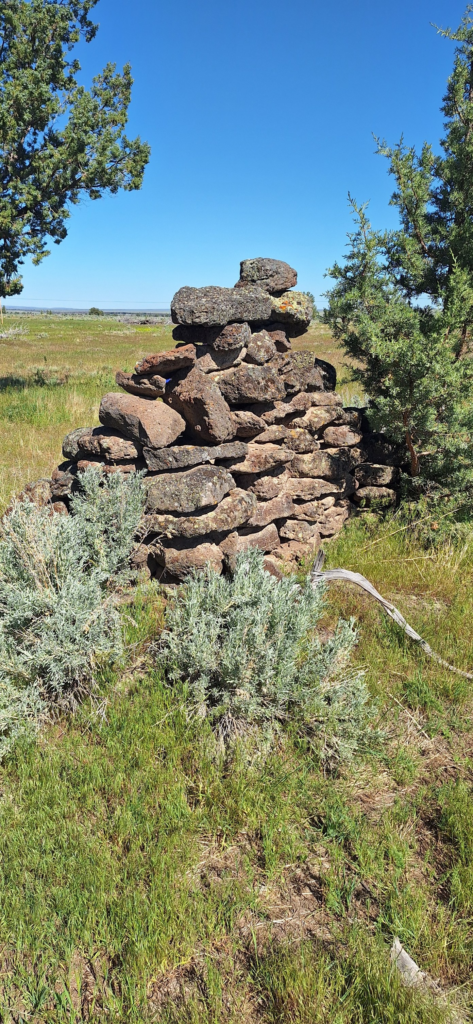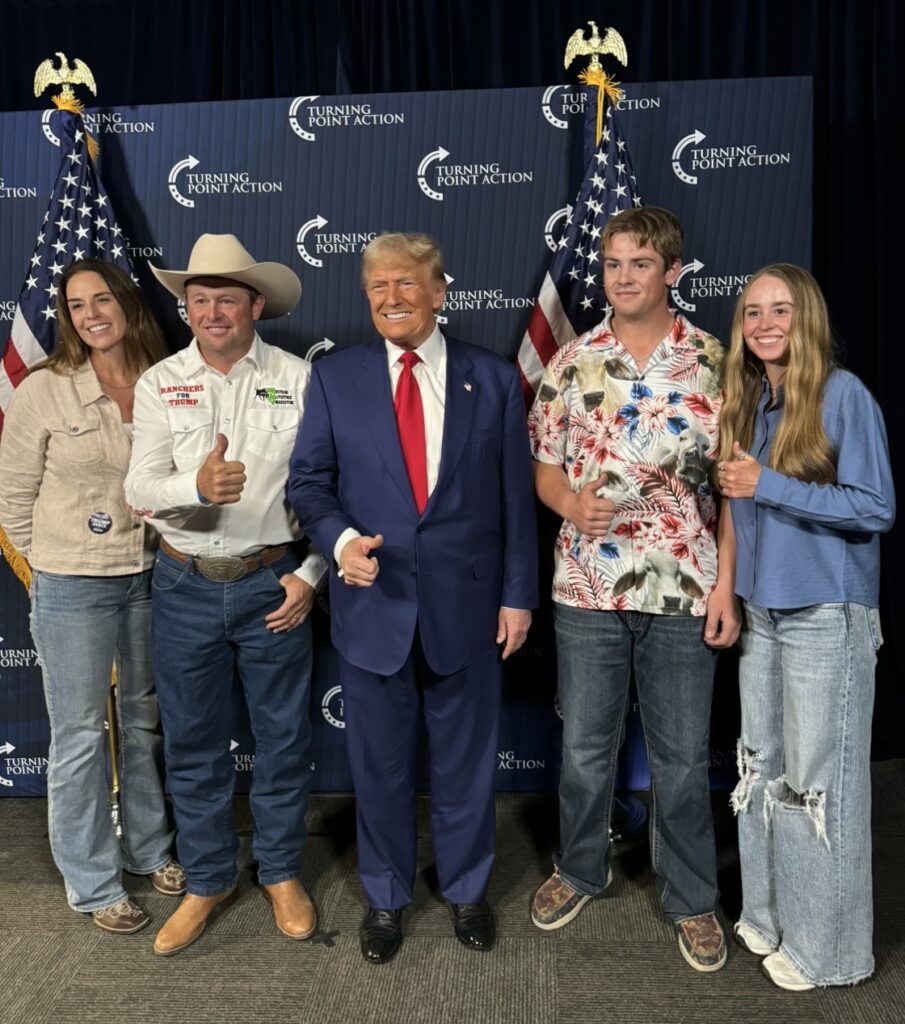Full-Service Cattle Sales & Marketing. Serving Nevada and surrounding states.

Legend has it that back before Juniper Mountain was chopped up by allotment boundary fences the cattlemen from that era camped here between the Lowry ranch and the Circle Bar. This old camp site is really close to the Oregon/Idaho border although I doubt they would have known that at the time. I’m assuming this had to have been around the late 1800s. This isn’t the remaining chimney of a burnt down house as it would appear but actually some kind of cooking or camp heat deal. Alot of the rocks have fallen down so it’s difficult to see what it looked like originally. As kids, anytime We were trailing cattle through here Dad would point it out and tell us kids the back story. This big ol juniper tree, he explained has notches cut out on an upper limb where the meat hooks were placed so they wouldn’t slide. Also the long lower limb is missing all the bark because the lead rope of the wrangle horse slid back and forth on it for many years. If you know anything about juniper trees you understand they drink ALOT of water and basically choke every other form of vegetation out with their shallow horizontal root system. Because they are so detrimental to the grass, ranchers and both state and federal governments allow for cutting and burning of juniper. Much of this area has been clear cut. I greatly appreciate our neighbors, The Moores for leaving this old tree and it’s rich history of early ranching on Juniper Mountain.
I like to ponder what it must have been like then. What kind of horses did they ride, how did they dress, where did they take their beef to market, what did those ol steers taste like? It would be really cool to hang with them for afew days as long as I could get back in my time machine as I know fully well they had to have been tuff as leather. There’s been lots of documentation of the history of Indians in this area. I wish someone would write about early ranching in the Jordan Valley and surrounding areas because much of the important information is being lost over time. next month, have faith and stay positive!

Regular sale starting at. 10:00 A.M. just before Feeder Sale Wednesday, June 18, 2025
If you can’t make it be sure to tune in at DVAUCTION.COM.
If you have cattle you want to consign please send videos/pictures and information to 661-305-2699. We will get them advertised for you on Facebook.
If you have any questions about vaccines and timing of vaccines, please don’t hesitate to call me 775-.217-9273.
Thanks to our awesome crew, sellers and buyers! Hope to see you in Fallon soon!!

ALL REGULAR SALES BEGIN AT 12:00 NOON
Our sales can be seen live at www.DVauction.com
| Jack Payne, Owner and Operator of Nevada Livestock Marketing, LLC in Fallon, NV also serves as the Regional Director for California and Nevada at the U.S. Cattlemen’s Association. |